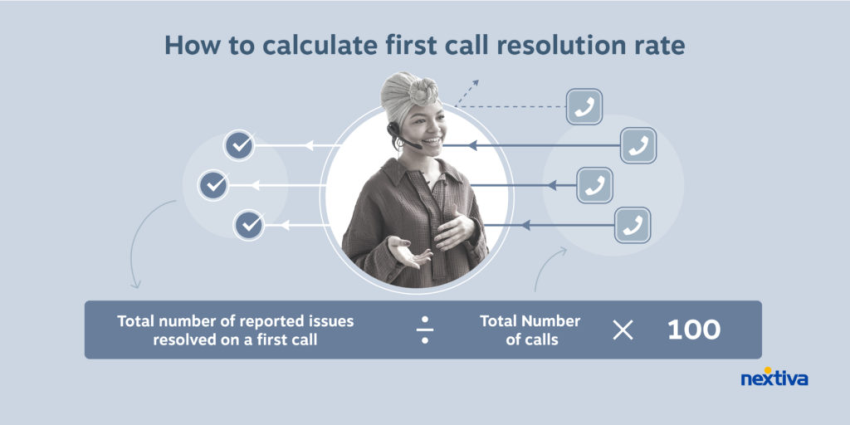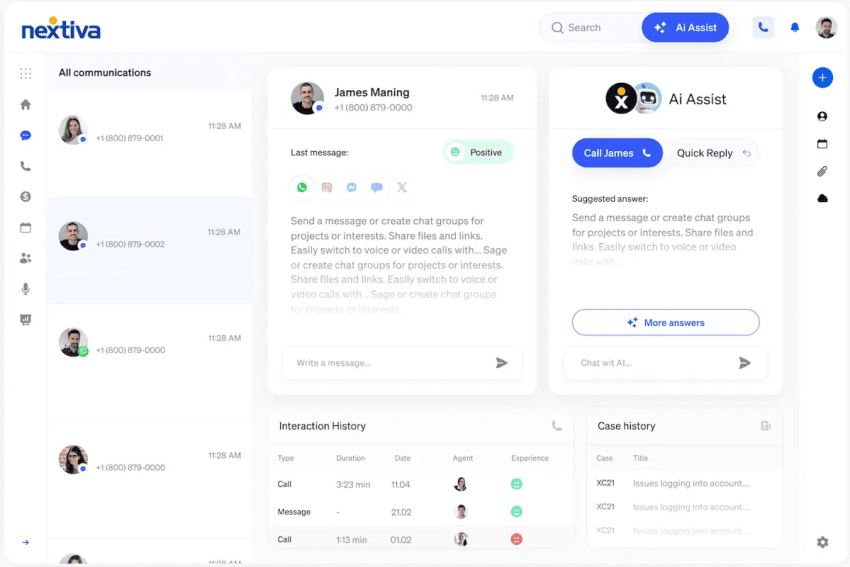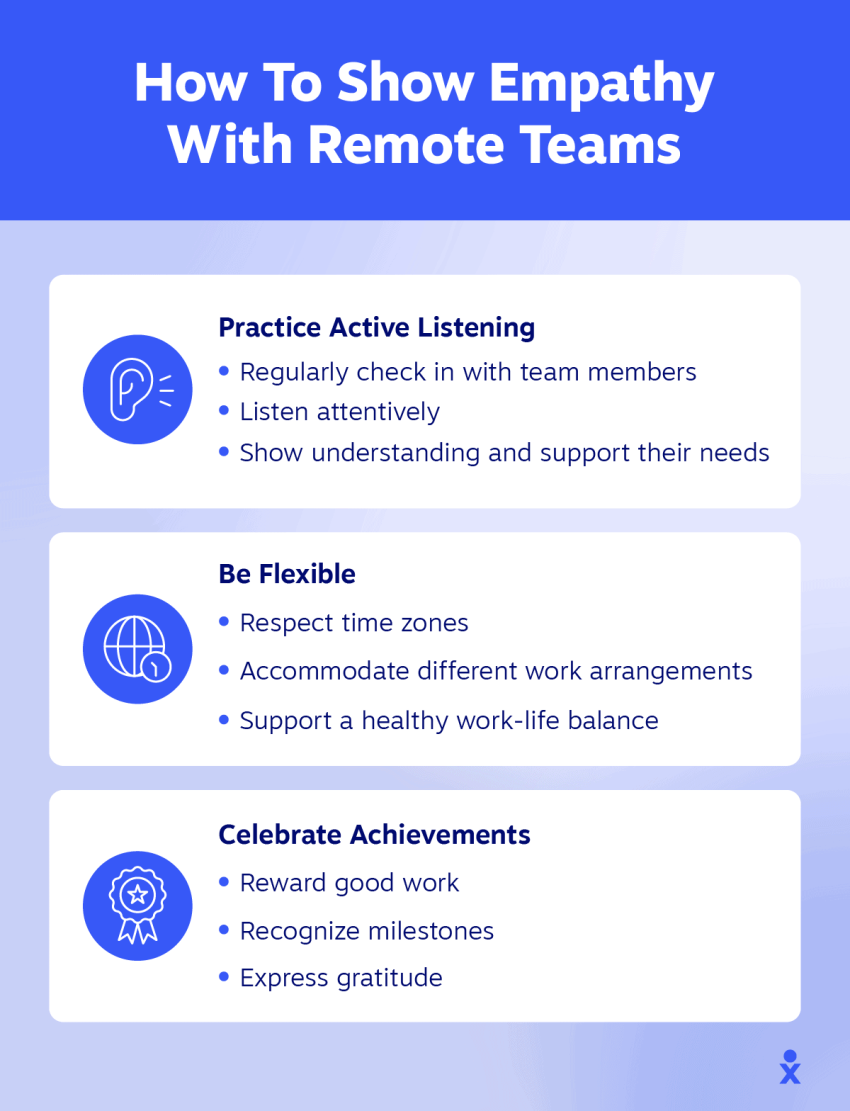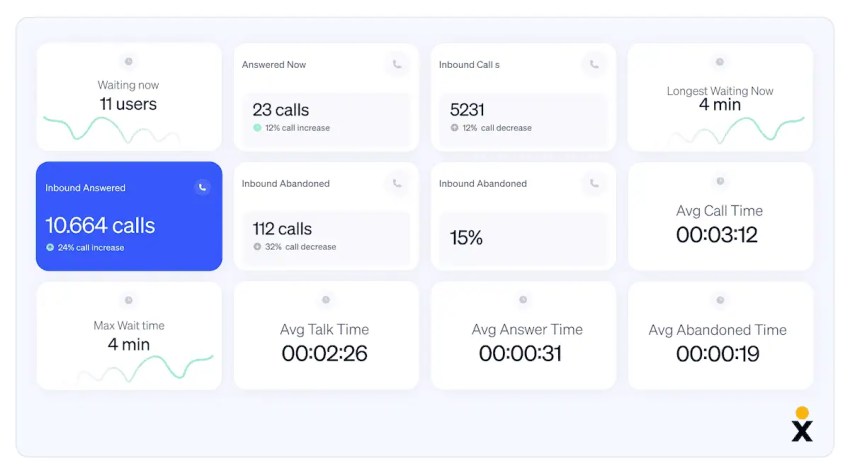On the one hand, you’ve got a premises-based physical contact center setup, tied to the office, restricted to staff members who live nearby, and costing an arm and a leg to maintain. When you need to upgrade users or get access to new functionality, it’s a cost and installation exercise. There’s probably downtime, and you’re always fighting to catch up.
On the other hand, you’ve got a remote contact center connected to the cloud, enabling access to a worldwide talent pool, business continuity, predictable costs, and automatic feature upgrades.
It’s no longer a fair comparison. Setting up a remote contact center is a must for 99% of businesses. The blueprint that follows is typical of the majority of businesses successfully running a virtual contact center.
Their secret? A unified platform that simplifies every step.
What Is a Remote Contact Center?
A remote contact center is cloud-based software that provides access to functionality for managing inbound calls, outbound calls, and omnichannel communication channels like email, web chat, social media, and SMS.
As well as connected channel management, you get access to features like:
- Real-time and historical reporting: Discover performance insights at a bird’s-eye or drill-down view.
- Predictive, AI-driven analytics: Dive into the rationale and metrics that improve customer satisfaction.
- Call routing and queuing: Create flows that enable customers to reach the right person efficiently every time.
- Self-service options: Remove the need to wait for a human and enable menu-based workflows and processes.
- CRM integration: Create a two-way data sync between customer information and your agent’s interface.
Sometimes included as part of a wider platform, many remote contact centers are extensions of an internal communications platform. When you use a single platform for both unified communications and contact centers, you benefit from a more integrated experience between contact center agents and back office staff.

6 Steps to Set Up a Remote Contact Center
When it’s clear that your business will benefit from setting up a remote call center, implementation is the obvious next step. But, as with any new technology, it pays to be prepared.
Step 1. Plan and strategize
Tracking metrics like first call resolution (FCR), service levels, and revenue targets ensures you’re responsible for a successful implementation. After all, replacing an on-site contact center has to come with a business upside rather than just being ripped out and replaced.

Prioritize which key performance indicators matter most to your business and track them on a weekly, monthly, and quarterly basis to reveal an improvement across your service teams.
Once you’ve listed what you’re measuring, it’s vital to choose your coverage by time zone, language, and channel (voice, chat, SMS, email, social). You can either link these metrics by channel or view them overall for the contact center.
Improvement won’t necessarily come overnight just because you’ve pivoted to a remote contact center. It’s important to map out a realistic budget across software, devices, training, and change management. Throwing technology at a problem is never the answer. However, the combination of good training, phased implementation, and best-in-class technology is formidable.
At this stage, it’s best practice to define a phased rollout:
- Pilot: Start with a select group of up to 20 call center agents (usually tech enthusiasts or experienced customer service reps) to test your remote contact center setup in a controlled environment. The goal here is to validate core functionality, identify technical issues, and gather feedback before broader deployment.
- Soft launch: Gradually expand beyond your pilot group to include new departments or locations, rolling out up to 30% of your intended user base over four to six weeks. This phase is designed to test system performance under increased load.
- Scale up: Execute the full rollout across your entire organization with confidence, deploying to all remaining agents and departments while implementing advanced features like AI-powered analytics and omnichannel capabilities.
Step 2. Select your tech and tools
As part of your selection process, and maybe even in your VoIP/contact center RFP, think about rating your requirements using the MoSCoW method:
- Must have: Business-critical functionality that is non-negotiable
- Should have: Important features you probably need but could live without if pushed
- Could have: Nice-to-have features that aren’t deal-breakers at this time
- Won’t have (this time): Future requirements you’re not ready for
After gathering your business needs, you’ll likely end up with a list of all your existing features. On top of your basic phone system functionality, think about:
- New core needs: They include omnichannel routing, IVR, call recording, transcription, QA scoring, analytics, and agent assist. These all help transform your customer-facing operation into a customer excellence center.
- Integration needs: They include computer telephony integration (CTI) for Salesforce or HubSpot, ticketing sync for Zendesk or ServiceNow, single sign-on (SSO), and System for Cross-Domain Identity Management. By combining data points and systems, you remove the need for constant duplication and reduce the risk of data error in transit.
- Admin needs: They include role-based access, audit logs, data export, and retention controls. Gives control to those who need it to comply with industry and data regulations.
- Security needs: They include encryption, regional data policies, and PCI and HIPAA readiness, where applicable. These shut down core contact center operations from the outside world and protect your data and business.

These requirements help shortlist relevant vendors and bring the best-of-breed contact center providers to the forefront.
Step 3. Recruit and train remote agents
You must approach remote teams differently than you do in your current office space. Setting up a remote contact center enables you to hire outside your local area and introduce remote work.
With these new personnel, consider the following for success from day one:
- Hiring profile of new agents: Self-management, empathy, written clarity, and basic troubleshooting
- Onboarding program: Role-based paths, product primers, live shadowing, and a library of recorded phone calls
- Ongoing coaching: Weekly one-on-ones to begin with, virtual side-by-side sessions, and calibration rituals
Remember, remote work challenges differ from the normal physical office setup. Here, you must treat employees with a certain level of trust. Checking in too often can be cumbersome and be viewed as a lack of trust. Lean on analytics programs built into your virtual call center software for agent performance-based metrics like average handle time (AHT), agent occupancy rate, wait times, and call volumes.

Step 4. Establish operations
You’ve sorted out your plan, people, and technology. The next step is to organize your processes to adapt to the new, more productive system. Here, it pays to get the following in order ahead of time:
- Document workflows: Intake, verification, knowledge search, warm transfer, and follow-up
- Routing changes: Encoding of routing by skill, priority, and customer value
- Quality assurance: Development of a balanced scorecard for accuracy, empathy, and efficiency
- Workforce management: Staff forecast, schedule adherence, and intraday management

Step 5. Equip agents and secure access
Once you’ve finalized how you’ll work, with which technology, and optimized your processes to drive performance from the very beginning, it’s time to consider your physical requirements. Here’s what you’ll need to provide agents both in the office and working remotely:
- Hardware checklist: Laptop, webcam, USB headset, and dual monitors
- Connectivity requirements: Stable high-speed internet connection and a backup plan
- Endpoint and identity policies: SSO, MFA, least privilege, device hardening, and compliance training
Step 6. Launch and optimize
Now that you’re ready to go live with your chosen remote contact center solution, there are a few checkbox items to ensure a stable setup and continued success:
- Soft launch with a small cohort and clear success metrics.
- Monitor real-time wallboards, listen for failure points, and run daily stand-ups.
- Iterate call flows, knowledge, and macros based on transcripts and sentiment trends.

Requirements and Compliance
As you probably know, there’s a lot more to contact center operations than simply enabling staff and handling incoming calls. In fact, some would argue that the most important things happen behind the scenes.
When setting up a remote contact center, regulatory and compliance aspects remain in place. Think about the following when transitioning from on-premises to the cloud:
- Data handling: Retention windows, deletion policies, and legal hold readiness
- Consent and disclosure: Requirements for recording and call monitoring
- Regional considerations: Data residency and language routing
- Audit readiness: Reports, logs, and documented calibrations

Metrics and Analytics
Knowing the importance of measuring performance and customer service levels, it’s advised to create a new (or revise your existing) scorecard:
- Include the absolute essentials like FCR, customer satisfaction, service level, AHT, abandonment rate, occupancy, and QA score.
- Pair numbers with narrative using transcripts and sentiment.
- Publish live views for intraday decisions and historical views for trend analysis.

Budget and ROI
One major aspect when setting up your remote contact center is requesting (and staying within) budget. When building your business case, make sure you document the following so as not to miss any items that may have unintended consequences for you at a later date:
- Recurring items: Platform subscription, PSTN usage, WFM and QA (if separate), and incentives
- One-time items: Devices, implementation, and training creation
- Savings levers: Fewer vendors, lower facility costs, no upfront costs, higher automation coverage, and shorter ramp
Your Remote Contact Center Launch Checklist
Copy and paste these items (and even print them out) to ensure you’re prepared when setting up your remote contact center.
| ASPECT | STATUS |
|---|---|
| BEFORE Go Live | |
| Queues, SLAs, and IVR paths configured and tested | |
| CRM CTI connected and screen pop verified | |
| Recording rules and consent prompts validated | |
| Knowledge base seeded and macros published | |
| QA scorecards and dashboards live | |
| Business continuity and failover tested | |
| — | |
| AFTER Go Live | |
| Real-time monitoring staffed | |
| Daily stand-ups with action items | |
| Agent office hours for feedback | |
| Week-one customer experience review and updates | |
| Performance metrics and SLA adherence reviewed daily | |
| Knowledge base and macros updated based on live issues |
Before Go Live
- Queues, SLAs, and IVR paths configured and tested
- CRM CTI connected and screen pop verified
- Recording rules and consent prompts validated
- Knowledge base seeded and macros published
- QA scorecards and dashboards live
- Business continuity and failover tested
After Go Live
- Real-time monitoring staffed
- Daily stand-ups with action items
- Agent office hours for feedback
- Week-one customer experience review and updates
- Performance metrics and SLA adherence reviewed daily
- Knowledge base and macros updated based on live issues
Why Businesses Choose Nextiva for Their Remote Contact Centers
Remote collaboration of any kind requires the underpinning of not only a solid foundation but also a technology platform that is both easy to set up and comes packed with AI-powered functionality.
That’s precisely where Nextiva comes in. You don’t get overwhelmed with complexity, yet you get access to a ton of advanced features at your disposal when needed.
Unified CX and communications
With a single-agent desktop for voice, messaging, email, and social media, all customer context is retained in a single thread. Likewise, there’s only one platform for agents to manage their internal communications as well. And it’s all integrated, so there’s no switching between applications or duplication of information.
While the interface is easy to use and integrated with your line of business applications and CRM systems, it also means simpler training, fewer tabs, and faster wrap time. Both your agents and customers benefit from efficiency gains.
AI that reduces effort
Unless you’ve been living under a rock, you’ll know that AI is the talk of the town. However, being confronted with so much AI and knowing where to get started is harder than it should be.
With Nextiva, you get access to features that use AI to reduce the effort your customers have to make when contacting you:
- Virtual agents: Free up human time for issues that require empathy and technical troubleshooting. Outsource simple inquiries to virtual agents.
- Smart routing: Make the first step of every customer interaction menu or voice-based and remove the need for live agents acting as call transfer operators.
- Self-service knowledge bases: Direct customers to online documentation and video tutorials to help themselves before needing to contact you and to avoid them having to wait for you.
AI also reduces the effort agents need for both basic and complex customer interactions:
- AI Agent Assist: Ensure agents get live help during interactions and can pull from internal documentation and best practices to move the conversation along smoothly.
- Post-call automation: Reduce post-call administrative activity by automatically creating transcriptions, summaries, and next actions.
- Sentiment analysis: Evaluate every call in real time (and after-the-fact) to learn trigger words, what’s upsetting a customer, and when to escalate.
Fast onboarding and simple admin
It’s an admin’s delight when a new platform is easy to implement. Just as your agents won’t need week-long workshops to learn how to use Nextiva, admins love the no-code visual call flows and pre-built templates for queues and scorecards.
For ongoing management, you get centralized roles and permissions with SSO as standard.
Reliability and security
You don’t need to overpay for high availability and active monitoring. With Nextiva, you’re signing up for 99.999% availability with eight points of presence and enterprise-grade security standards.
Encryption and contact center compliance features are ready for regulated teams and those working in highly data-driven industries:
- PCI compliance
- HIPAA adherence
- Telephone Consumer Protection Act
- Data privacy laws: GDPR, CCPA/CPRA
Open integrations and CRM CTI
Almost every contact center uses a CRM, and every contact center has other business applications it needs to integrate with. As a cloud-based contact center, Nextiva has easy access, is simple to configure, and has certified connectors for leading CRMs and help desks.
This means you get two-way sync for tickets, contacts, and activities, reducing the time agents spend on manual and repetitive information updates.
Workforce and quality management
The final piece of the contact center puzzle is ensuring everyone is working to the standards you desire. In an in-person, traditional call center solution, this means manual quality monitoring and the use of spreadsheets to manage staffing levels.
With Nextiva, you get built-in QA workflows with automated scoring and calibration as well as WFM signals surfaced for intraday adjustments. There’s no need for repetitive listening to calls and arduous cell manipulation. Instead, use your single platform for all your agent management needs.
Want to kick-start your remote contact center? If simple implementation with the ability to scale in the future is key, you’ve come to the right place.
Ready to get started? Check out Nextiva Contact Center.
Top AI-Powered Contact Center Solution
Transform your customer interactions with a contact center platform that saves you time and money, reduces agent and supervisor stress, and flexibly adapts to fit your needs.

















 Customer Experience
Customer Experience 








